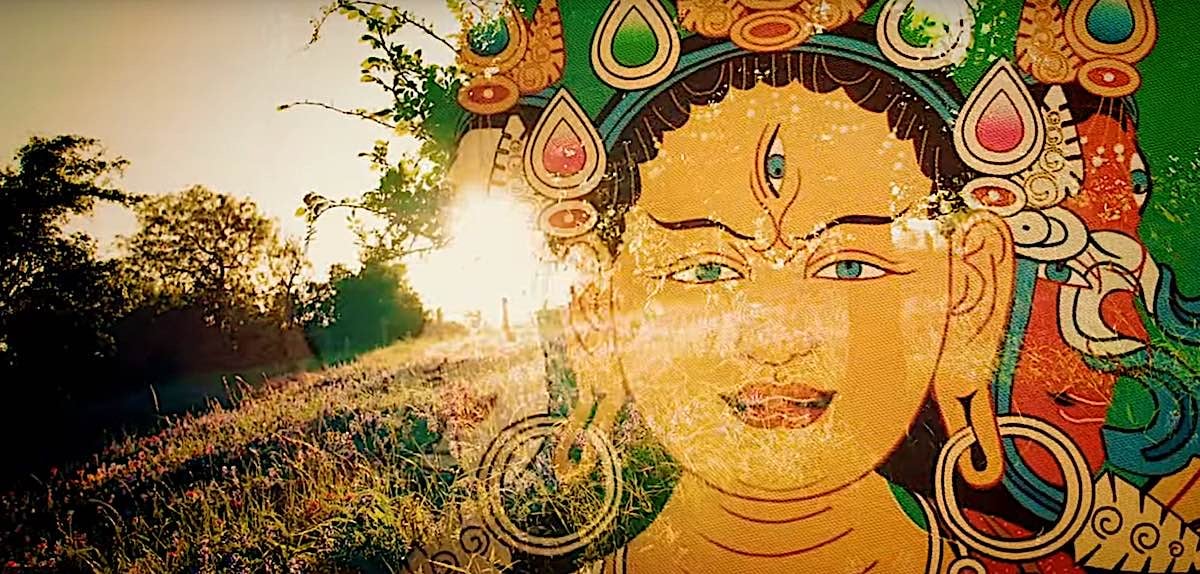Finding Your Way Forward When the Path Is Not Clear
The ground beneath your feet may be shifting, but mindfulness can help you find your way forward with skill and passion. Let your practice be your guide. The post Finding Your Way Forward When the Path Is Not Clear...

After 17 years of living with a life-threatening kidney disease, at the end of 2008 I received a new kidney from a generous former student. The surgery extended and revolutionized my life. My skin turned from a sad yellow to a vibrant pink. After years of a diet restricted to what seemed like filtered water and saltines, I treasured the moment my teeth sunk into a succulent beef-tongue taco. For the first time in years, I could meet the day with vitality and dream about a future.
Since most organ rejections happen early on, the first few months were tenuous. Once it was clear the procedure was a success, the next six months were exuberant. Were this a Lifetime Channel special, the credits would roll at the happy ending. However, without warning I sank into a deep and anxious depression. It dragged on for the next 18 months and I felt aimless, worthless, and hopeless. Though my health was better than it had been in decades, there were times I lost the urge to continue living. I knew something was up and began to look for answers.
I found my experiences mirrored what many wise people have said about what happens during transitions. I discovered a rich literature and tradition around transitions, containing maps and guides for how to navigate them.
I learned that changes are distinct from transitions. Changes are events. You get married. Your company is taken over and ceases to exist. A global pandemic breaks out. Your dog dies.
Transitions are the inner shifts of identity, possibility, and belief that occur to help us assimilate and adjust to changes. Some are easy, others are difficult. They don’t occur automatically, and they often require consistent and specific efforts. Like a video game where you slay a demon to move to the next level, transitions throw down a series of monsters that must be overcome before you can move ahead.
As I navigated the transition occasioned by my new circumstances, mindfulness proved an essential ally for me. It created the ability to keep me moving ahead through a bewildering territory and into a renewed sense of purpose, wonder, and joy.
Navigating Transitions and Endings
Changes are inevitable. I’ve observed there are five Ds that propel us into reconsidering our lives: Death, Disaster, Disease, Divorce, and Downsizing. They are the harbingers of transition because they signal that something familiar—a role, a way of living, a relationship—has come to an end. In a culture like ours that sees time as a straight line moving from past to future, these changes seem like finalities, the end of the road.
Endings can come with despair, grief, and a sense that a future is impossible. A ten-year old girl from a well-to-do family comes home from school in El Salvador to find her 40-year-old father has died. The family plunges headlong into wrenching change. Her mother leaves her and her siblings behind to work as a maid in America, sending money back home for a decade. Eventually, the family is reunited. The little girl grows to be a successful finance executive, but says her father’s death ended the sense of safety, security, and family she had known.
There are other kinds of changes. Graduations, births, and promotions are also moments when the old and familiar dissolve into something new and unknown. These are the changes that can take us by surprise because even though they are ostensibly “positive,” there is still some sort of reformatting taking place, and with that an old way of life passes into history.
Instead of seeing time as a straight line, if we see life as a series of cycles of growth, maturation, and death followed by rebirth, we can better understand why endings are necessary for new beginnings.
Maybe you miss the quiet days before children or the frivolity of student life or the flow-like pleasure of contributing to an organization without the heavy responsibilities of being a manager. Your sullen feelings, or longing for some previous way of being despite moving into a new and wider world, may feel mysterious and even incongruous to you.
Endings need to be acknowledged. We need to give them attention, accept that they are taking place, and appreciate the experiences that led to them. They ask us to bring things to closure. Instead of seeing time as a straight line, if we see life as a series of cycles of growth, maturation, and death followed by rebirth, we better understand why endings are necessary for new beginnings.
Navigating the Zombie Zone
After the end of the familiar, it can seem like you’re stepping into a void. In this foggy maze, there are no signposts with arrows assuring you, “This way out.” You can feel lost and zombielike or at least unmoored and disoriented as you wander the earth. The old rules don’t seem to apply anymore. What used to work well no longer does. You feel strange and not like your old self but not yet something fully formed. Does the caterpillar in its pupae stage on the way to butterfly-hood ever think to itself, “What the hell is going on with me?!”
A common feeling here is anxiety that takes the form of a desire for answers and a rush to a settled future. A student of mine who had worked for the same organization for decades found herself unemployed. As we sat together at lunch with two half-eaten Cobb salads separating us, she ask plaintively, “How can I get through this as fast as possible?”
What distinguishes this middle period is doubt, discomfort, and disorientation. Learning to return to the present and accept uncomfortable sensations is one of the monsters to be faced at this stage.
We sometimes think it would be preferable to give up on life because the story of who we are doesn’t fit anymore. When we believe our story too much, we feel like not only has the story come to an end but maybe we’ve come to an end. Why not just get out of the misery? In my case, mindfulness allowed me to recognize and be with depression and uneasiness without getting swallowed by it.
The depression and the desire to isolate oneself might be our system’s way of asking us to slow down and take stock. What rules apply now? What do I need to let go of?
Letting go of what doesn’t work anymore is the next monster. Maybe what needs to be released is a belief, a resentment, or an identity. The process is deconstructive.
A utilities executive who was a war refugee as a child came to terms with letting go of her view of herself as an underdog who always has to fight to get what she wants. She realized by not seeing life through the lens of a constant battle, she can live easier. Just as a hot-air balloon must drop the weight of sandbags to soar, letting go of the old and unworkable is the only way to keep from sinking. It makes space for something new.
Though you may be sloughing off the old, at some point you realize you’ve hit bottom. Choices become very simple. No matter how much you may want to, you cannot return to the familiar old world. If you choose not to founder on the rocks, the only way is forward. The growth aspect of this middle period is intentional exploration. So the task here is to balance letting go with the search for something new: new relationships, new places, new ways of thinking, seeing, and living. Like trying on new clothes, looking in the mirror, and asking, “Can I pull this off?” This process can feel wasteful and indulgent. There can be many false starts, further compounding the sense of hopelessness.
This is only part of the monster’s bag of tricks. Perseverance is essential. Put one foot in front of the other. Do the next thing, even if you’re unsure what the next thing after that is. Enlist the support of others—we don’t walk the path alone and rarely is the path straightforward. It’s a journey of discovery.
An architect at mid-career feels his game is up. He’s tired of clients asking him to churn out variations of his “greatest hits.” So he takes a pilgrimage to the offices of avant-garde architects. Through his conversations he glimpses possibilities. He realizes he must let go of his old habit of focusing only on himself and advancing his vision. He embraces collaboration and dialogue with the communities he builds for—an orchestra conductor instead of a visionary auteur. From these interactions come dramatic designs unlike anything he’s ever done. He revitalizes himself and his work.
Finding Your New Groove
Eventually something sticks. The despair is replaced by a tentative sense of aliveness. Not sure of this sensation, we are suspicious that something could feel fulfilling or enjoyable. We question it. Could this be real? Am I being duped and betrayed? However, a new equilibrium can begin to emerge. There are often confirming events that dampen doubts and signal a new way forward with a sense of resolution, commitment, and possibility.
In my case, I won a series of teaching awards reaffirming my love of working with people. In addition, I received a promotion that would allow me to focus on teaching. That set in motion a different life from the one I had before my surgery. I emerged into a new role and learned that what I did had value for others. I received invitations to lecture in Europe and Asia. I met a kind and beautiful woman who became my wife. This emerging life bore little resemblance to the one that had ended.
Eventually something sticks. The despair is replaced by a tentative sense of aliveness. There are often confirming events that dampen doubts and signal a new way forward with a sense of resolution, commitment, and possibility.
I’ve found that dreams can sometimes shed an interesting light on transitions, as archetypal ideas bubble up from deep in the mind.
My own new beginning was marked by a dream of encountering a glowing Tokyo Tower standing in hills near where I live. It pulses with otherworldly power. Kids wearing black sneakers I’d just purchased in real life walk by. They tell me it takes 20 years to be a success. I touch the tower and powerful sensations course through my body. I wake up—20 years older than I was when I was first diagnosed with kidney disease.
It makes me optimistic to see the resilience people have in the face of enormous changes. Through working with people in transition I’ve become a cautious optimist about human possibility. In class, we spend a day listening to each other’s transition stories: What ended? What was let go? What was gained in return? The repeated exposure emphasizes that we’ve all been through this before and we can do it again.
Finding Your Way
Ask yourself these questions as you contemplate how you move through change and transition. It may help you to make note of your answers in writing.
Pick a significant change in your life. What transition took place as a result? Do you have a pattern in how you deal with endings? Do you just keep moving or make space to mourn or acknowledge what was lost? Do you accept that something or someone has passed? What endings are incomplete? How can you create a way to bring closure to unfinished business? How do you handle sensations of discomfort in transitions? What happens when you lessen your resistance and increase acceptance to not knowing? Try new things, go to new places, meet new people, learn new skills as if you’re trying on new clothes, asking, “Does this feel right?” Create a system of support. Sense what enjoyment or being refreshed feels like in the body. What do you know now that you didn’t before?A Practice to Embrace New Beginnings
Feelings that arise when something ends can remind us that we’re not in control. Try this letting go ritual the next time you need a gentle reminder to create space for the next stage.
Read More

 Konoly
Konoly 































